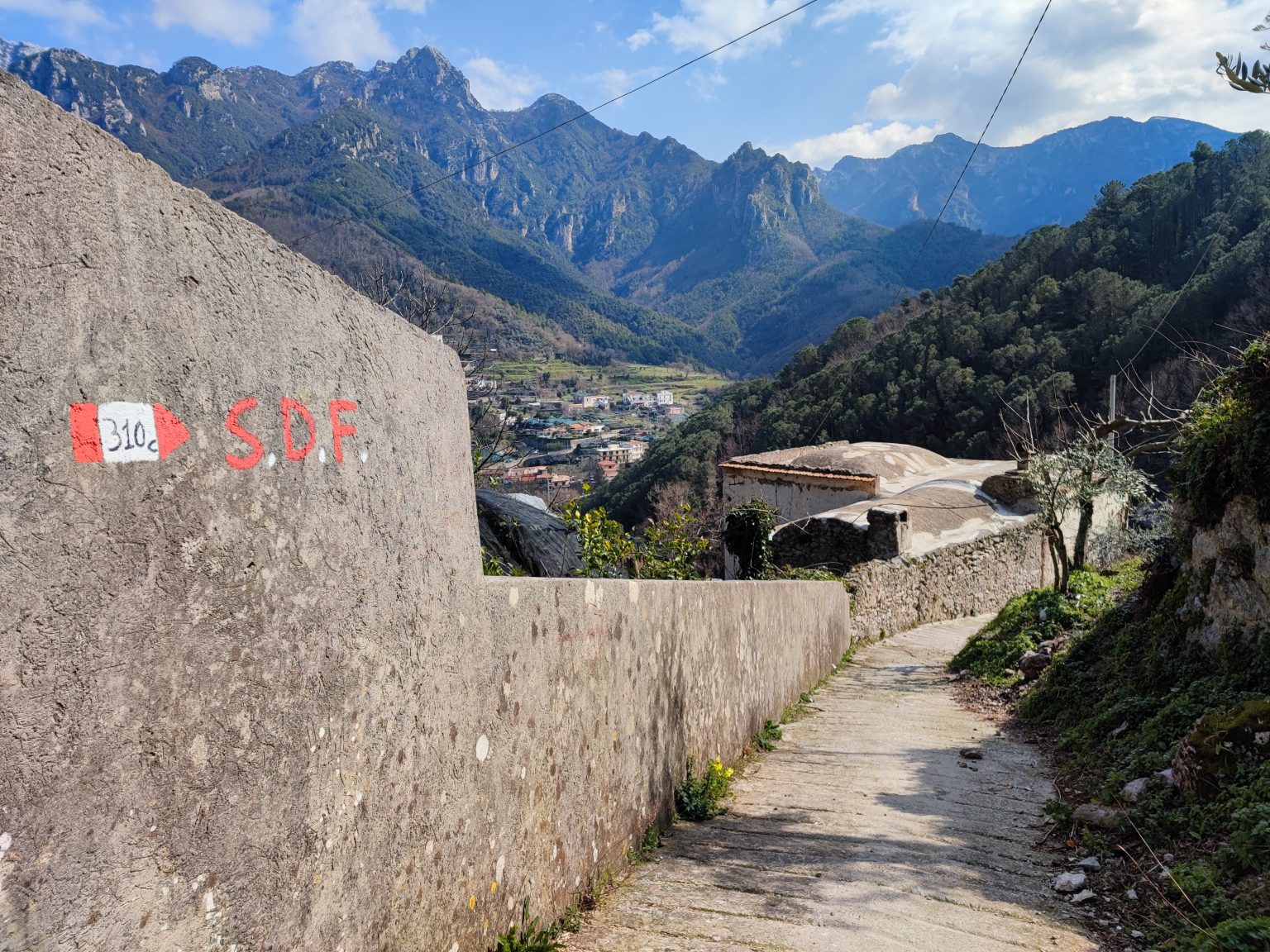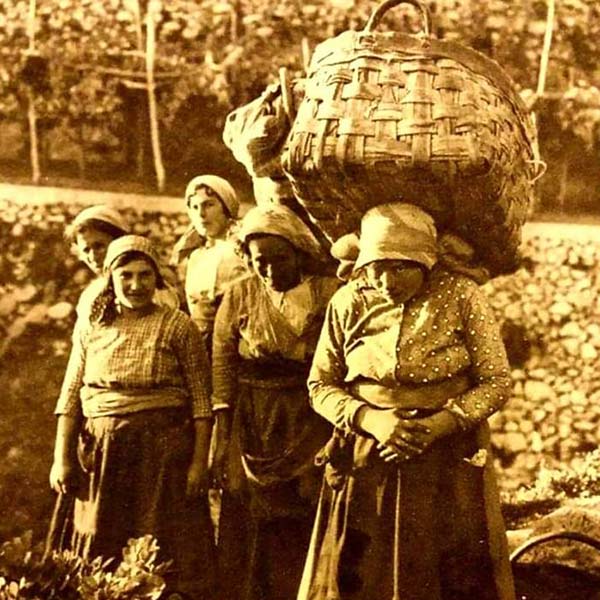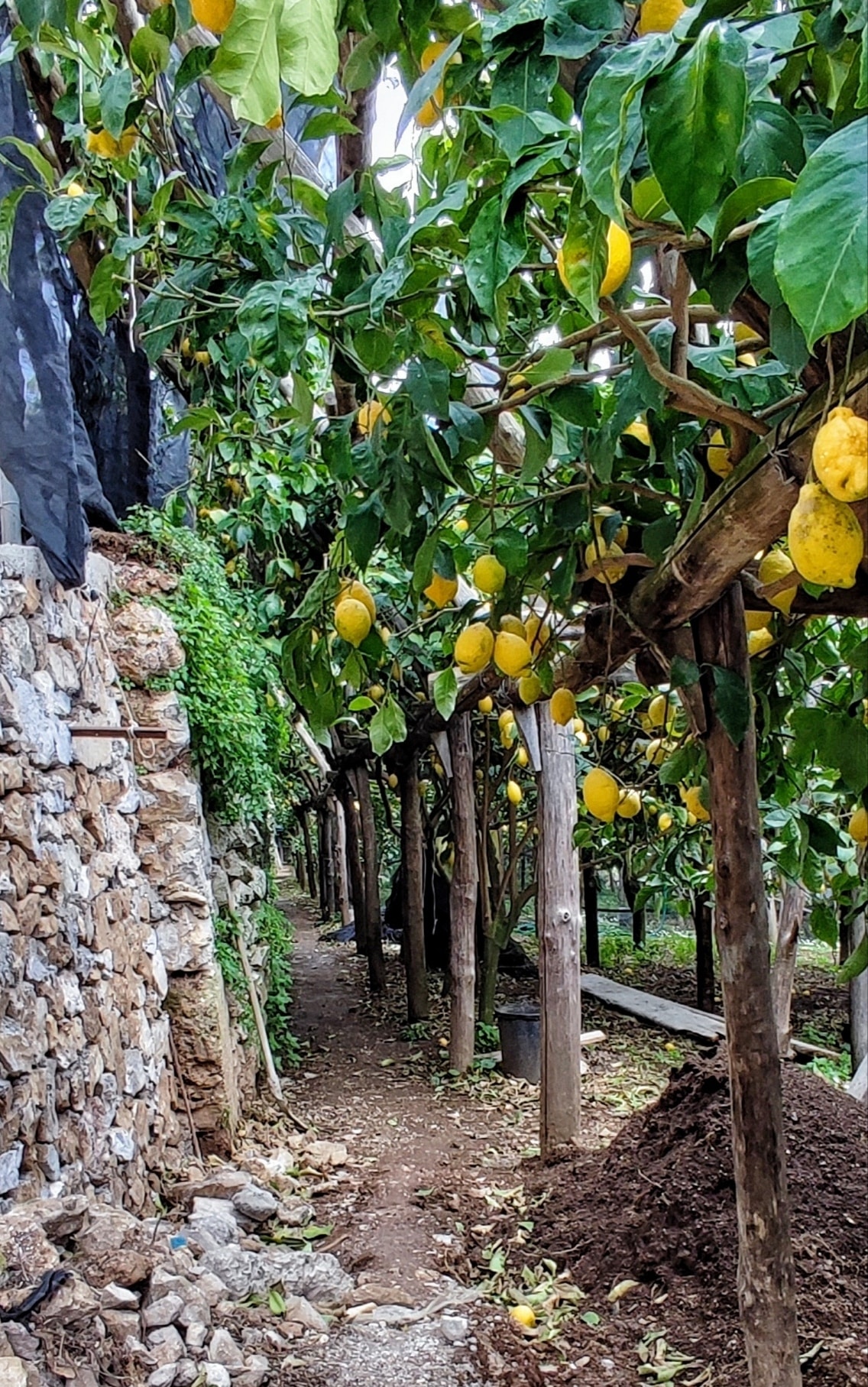The ancient heart of the Amalfi Coast revealed through trekking dedicated to the memory of the fearless lemon carriers
July 7th, 2024. By Susy Pepe.
Carved out laboriously among the rocks of the Amalfi Coast by the immense effort of women who, for centuries, traversed it carrying 60-kilogram baskets of lemons on their heads, the “Formichelle” path bears witness to the fascinating history of these carriers. They would go up and down stairs, terraces, and cliffs overlooking the sea multiple times a day without pause to transport the golden treasure of the Coast. Today, it has become one of the emerging trekking routes. This path winds through lemon groves and forests from Tramonti to Maiori, offering a journey through the unmistakable landscape of the “Divine” and an immersion into its popular and rural stories, marked by the silent toil of many women and the traditions they passed down.

The history of formichelle
The symbolic name of the path is a tribute to the lemon carriers who, until the 1970s, could be seen in single file along the steep slopes of the entire coast, with enormous baskets on their heads. Every step they took was accompanied by the strong scent of freshly picked citrus fruits. With their backs straight, forming a right angle with their heads bowed under the weight, and their feet wrapped in rags to grip the steep path, they moved slowly and proudly, despite the exhausting effort. A column of women who resembled so many little ants, “formichelle” in dialect, hence the name.
Like the industrious insects they were compared to by popular wisdom, generations of “formichelle” worked hard to support their families, becoming an emblematic figure for the people of the Amalfi Coast. Today, on that same path, the columns are formed by hikers exploring the recently restored route. The six-kilometre path, of medium difficulty and taking four hours to complete, starts from the church of Sant’Elia in Paterno di Tramonti, where one meets the mule track that crosses a forest and then leads towards the sea through the lemon groves. The points from which to admire the vertical panorama of the Coast alternate with passages enclosed by dry stone walls, guardians of the gardens. The sun-coloured citrus fruits hang overhead, brushing against visitors’ heads and accompanying them with their fresh and pleasantly tart essence. The path ends halfway up the hill, overlooking the sea at Maiori. Continuing downhill for twenty minutes leads to the Lemon Path and the shores of Maiori and Minori.

The path of Formichelle today
The four hours needed to complete the route may seem lengthy, but they pass gently, basking in the sunshine and intoxicated by the scents. The terraces and other agricultural and hydraulic works speak of the titanic efforts of the farmers who, with ancient but extraordinarily modern techniques, managed to seize, exploit, and defend a harsh land, shaping it according to their needs. Symbolic of this are the “macere,” the walls supporting the terraces, which over the centuries have taken flat land from the vertical sides of the Lattari Mountains. On the “Formichelle” path, the uniqueness of the Amalfi Coast, a UNESCO World Heritage Site since 1997, reveals itself as the offspring of its rural history and the industrious hands of its inhabitants.

The idea to enhance the ancient mule track came two years ago from young hiking guide Matteo Giordano of Tramonti. He realised that the path, christened the “Formichelle” path, could become an experiential trek. “My aim is to make people aware of the paths I grew up on, lesser-known routes next to the more famous ones of the Coast, which still preserve the authentic history of our land,” Giordano emphasised. “In this challenge, I received support from many young people, local associations, and the Municipality of Tramonti. We rolled up our sleeves and voluntarily restored the path.” A winning choice, as highlighted by Tramonti’s deputy mayor, Vincenzo Savino: “With the Formichelle path, the number of visitors to our trekking routes increased by 30%”
Many hikers are not only drawn by the beauty of the places but also by the curiosity to discover the sea trade that created the power of the Maritime Republic of Amalfi and later the Coast. The king of these trades was the Amalfi sfusato lemon, introduced by the Arabs, which brought wealth before tourism took hold. For centuries, this territory’s golden fruit took to the seas first on Amalfi galleys and from the 18th century on English ships as a cure for scurvy. In the mid-19th century, it reached the America. Ships that sailed the world’s seas did so thanks to the efforts of the “formichelle,” who transported the lemons, proudly bearing them on their heads like shining golden nuggets.
The sweet tribute to the lemon bearers
An ancient world that disappeared during the 20th century with the rise of other, more economical varieties of the fruit cultivated elsewhere. Today, its indelible traces remain on the territory and the history of the intrepid “formichelle,” to whom pastry chef Sal De Riso has also dedicated a dessert. The president of the Italian Pastry Masters Academy, who has a bistro in Minori, created a gâteau with white chocolate and vanilla cream scented with lemon, a coffee cream heart with lemon zest, hazelnut crunch, and almond shortcrust pastry. He named it “Formichelle Path” as his “personal tribute to a historic figure of the Divine and her hard, silent, and precious work.”
The book written by Alessia Castellini
An ancient and arduous tradition that has also inspired the writer Alessia Castellini, who published her book “The Path of the Little Ants” with Piemme. Amalfi Coast, 1940s. Rachele and Nannina cross the mountain every day like industrious little ants, carrying heavy baskets of lemons to the coast of Maiori, where the sea stretches out endlessly. Rachele believes that the world has harsh and unchangeable rules and is proud of her village’s traditions, while Nannina has dreamed since childhood of lands far from the steep path they must walk for a lifetime, until their backs and knees break. Eighty years later, two sisters, Ninfa and Alelì, arrive in the village, convinced that this story is merely a figment of their late grandmother’s imagination, who was a writer. Instead, they will discover that Rachele and Nannina truly existed, and that the Path of the Little Ants holds a secret that their family has forgotten for decades. The book will be presented on 10 August 2024 at 6:30 p.m., in the square in front of the church in the hamlet of Paterno Sant’Elia in Tramonti.
First publication 15 March 2022 – Professional journalist’s aptitude test 134th session – Susy Pepe
